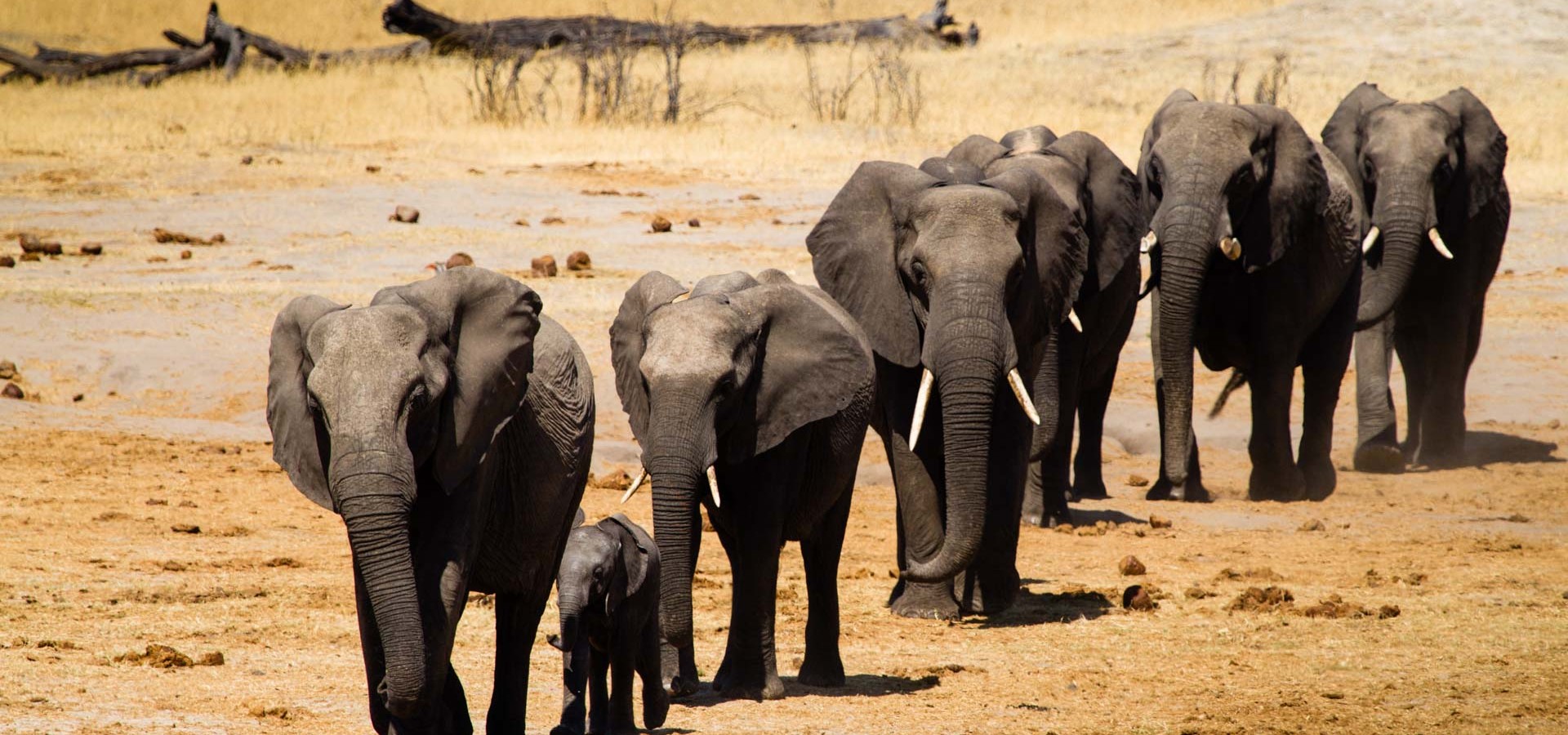Once Hwange National Park was declared a National Reserve in 1929 one thing became clear soon. To support a stock of game on the edge of the Kalahari Desert, a permanent water supply was needed, especially during the dry season. Over 60 holes were drilled and the water pumped up by noisy diesel powered pumps. Although the animals can roam freely around this park the size of Belgium, they have become dependent on the water holes maintained by the ZimParks Authorities. Unfortunately, suffering from lack of funding, many of these pans stay dry, due to broken pumps or the lack of diesel.
Unaware of the borehole business, we followed the routine of a typical game drive, thinking early mornings and evenings are best. Quickly we found out that driving around was much less rewarding than waiting at one of the few waterholes where the pumps were still working. And ironically, we came across a lot more animals around noon: warthogs, all kinds of gazelles, hyenas, zebras, the occasional buffalo. But above all, this is elephant territory. And they decide who is allowed at the boreholes!
The second lesson learned was that the far more experienced South African visitors favor the remote “Wilderness Camp Sites”, the ones close to the waterholes, like the Masuma Dam Camp… There, they can view wildlife from sunrise to sunset without getting out of their camping chairs. A true privilege and out of reach for those who stay in camps, like us – from there it is up to an hour drive to the main waterholes and self-driving is strictly prohibited before 06:30 am and after 06:00 pm.
Nevertheless we enjoyed our stay in Hwange Main Camp and the two nights in Sinamatella Camp, on the Western fringes of Hwange National Park. Inside the chalets it was definitely warmer than in a tent. And keeping warm was essential during those wintry nights. Have you ever wondered how wimps like us get access to hot water in such exposed places? Outside of each hut, little wood-fired brick stoves heat barrels filled with water, which finds its way inside and to the bathroom. A clever technique and a convenience surely appreciated at these temperatures…
Near Sinamattela, on the western fringes of Hwange National Park, we enjoyed the best game viewing. Two evenings in a row, we watched about 200 elephants gather at the Masuma Dam waterhole, the bigger ones shoving, pushing and trumpeting for a good position. Cheeky baby elephants sneaked underneath big bellies, curious what the commotion was all about.
Every minute something different, exciting caught our eye: a baby elephant falling on its rear end, young ones spraying themselves with mud and then standing perfectly still to dry the shiny crust in the sun. Just watching them suck up the water in their trunk, curl it up, throw back their head and gurgle it all down, was pure delight. It was a constant coming and going of large herds. The closer the caravan got to the water, the faster they ran, whirling up large clouds of dust. Trotting back into the bush was done in a more composed way…
Other animals were also approaching: gazelles, zebras, warthogs, buffaloes, but keeping a respectful distance to the elephants. Our lesson learned, buffaloes are the most daring ones, whereas zebras are even scared off by young elephants practicing a mock charge.
You would expect hundreds of camera-yielding tourists at such a place. Wrong, we were maybe 15 to 20 people, sometimes just a few, staring out there, at this mass of grey bodies. Nobody said a word, like in a secret agreement. The true privilege is to watch this spectacle all evening and late into the night, which only a couple of well informed South Africans enjoyed. They had managed to reserve the few rare camp sites at this strategic spot, overlooking the waterhole. Drinks in their hands, slumped into camping chairs, they marked their territory. We had to leave, heart-broken, while things were still rolling. No driving within the park after 6 pm is allowed and we had to get back to our camp before that.




